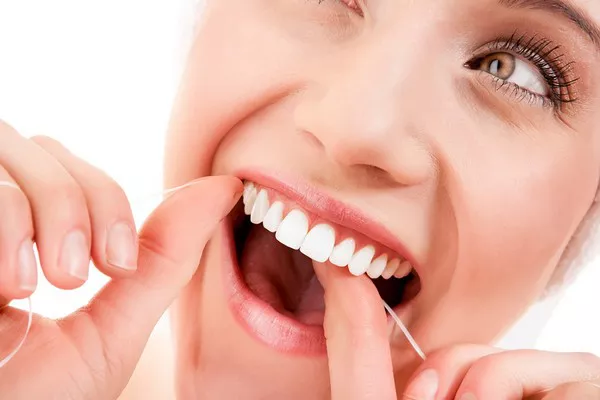Gingivitis, often referred to as gum inflammation, is a common and early stage of gum disease. It is characterized by redness, swelling, and bleeding of the gums, typically caused by the accumulation of plaque—a sticky film of bacteria—on the teeth and gums. The good news is that gingivitis can often be effectively treated and even reversed with proper care and attention to oral hygiene. In this article, we will explore the steps and strategies for treating gingivitis intensively at home, empowering individuals to take control of their oral health.
Understanding Gingivitis
Before we dive into home treatment options, it’s important to understand the basics of gingivitis:
Plaque Buildup: Gingivitis is primarily caused by the accumulation of plaque on the teeth and along the gumline. Plaque contains harmful bacteria that can irritate the gums and lead to inflammation.
Common Symptoms: Early signs of gingivitis include redness, swelling, and bleeding of the gums, especially when brushing or flossing. Some people may also notice bad breath and an unpleasant taste in their mouth.
Reversible Condition: Gingivitis is generally considered a mild and reversible form of gum disease. However, if left untreated, it can progress to a more severe form called periodontitis, which can lead to tooth loss.
Home Treatment Strategies for Gingivitis
Treating gingivitis at home intensively involves a combination of effective oral hygiene practices and lifestyle adjustments. Here are some key strategies:
Brushing: Brush your teeth thoroughly at least twice a day, using a soft-bristle toothbrush and fluoride toothpaste. Be gentle yet thorough, making sure to brush all tooth surfaces and along the gumline.
Flossing: Daily flossing is crucial to remove plaque and food particles from between your teeth and along the gumline. Proper flossing technique involves curving the floss around each tooth in a C shape and gently sliding it up and down.
Antibacterial Mouthwash: Rinse with an antibacterial or antimicrobial mouthwash to help reduce bacteria in your mouth. Consult your dentist for recommendations on suitable mouthwash products.
Tongue Cleaning: Don’t forget to clean your tongue as well. Bacteria can accumulate on the tongue’s surface, contributing to bad breath. Use a tongue scraper or your toothbrush to gently clean your tongue.
Replace Your Toothbrush: Change your toothbrush or toothbrush head every three to four months or sooner if the bristles appear frayed. A worn-out toothbrush is less effective at removing plaque.
Dietary Choices: Limit sugary and starchy foods in your diet, as these can contribute to plaque buildup. Instead, opt for a balanced diet rich in fruits, vegetables, and whole grains.
Hydration: Stay well-hydrated by drinking plenty of water throughout the day. Water helps flush away food particles and bacteria in your mouth.
Quit Smoking: If you smoke, consider quitting. Smoking is a significant risk factor for gum disease and can hinder the healing process.
Stress Management: Chronic stress can weaken your immune system, making it harder for your body to fight off gum infections. Practice stress-reduction techniques like deep breathing, meditation, or yoga.
Regular Dental Check-ups: Schedule regular dental check-ups and cleanings with your dentist. Professional cleanings can remove plaque and tartar that may be difficult to reach with home care alone.
Intensive Gingivitis Treatment Routine
To intensively treat gingivitis at home, consider adopting the following routine:
Morning Routine:
Brush your teeth for at least two minutes using a soft-bristle toothbrush and fluoride toothpaste.
Gently brush your tongue.
Rinse with an antibacterial mouthwash.
Midday Routine (Optional):
If possible, brush your teeth after lunch or rinse your mouth with water if brushing is not feasible.
Evening Routine:
Brush your teeth thoroughly.
Floss between all teeth.
Rinse with an antibacterial mouthwash.
Weekly Routine:
Consider using an interdental brush or soft-pick to clean between teeth at least once a week, in addition to daily flossing.
Regular Dental Check-ups:
Visit your dentist as recommended for professional cleanings and check-ups.
Monitoring Progress:
As you intensively treat gingivitis at home, pay attention to any changes in your oral health. Over time, you should notice improvements in gum redness, swelling, and bleeding. If these symptoms persist or worsen, or if you experience any discomfort or signs of advanced gum disease, consult your dentist promptly for professional evaluation and treatment.
Conclusion
Gingivitis is a common and reversible form of gum disease that can often be effectively treated at home with a dedicated oral hygiene routine and lifestyle adjustments. By adopting a comprehensive approach to oral care, individuals can maintain healthy gums and reduce the risk of gum disease progression. Remember that regular dental check-ups are an essential part of maintaining oral health, as they allow your dentist to monitor your progress and provide professional cleanings and guidance as needed.
Related Topics:
































